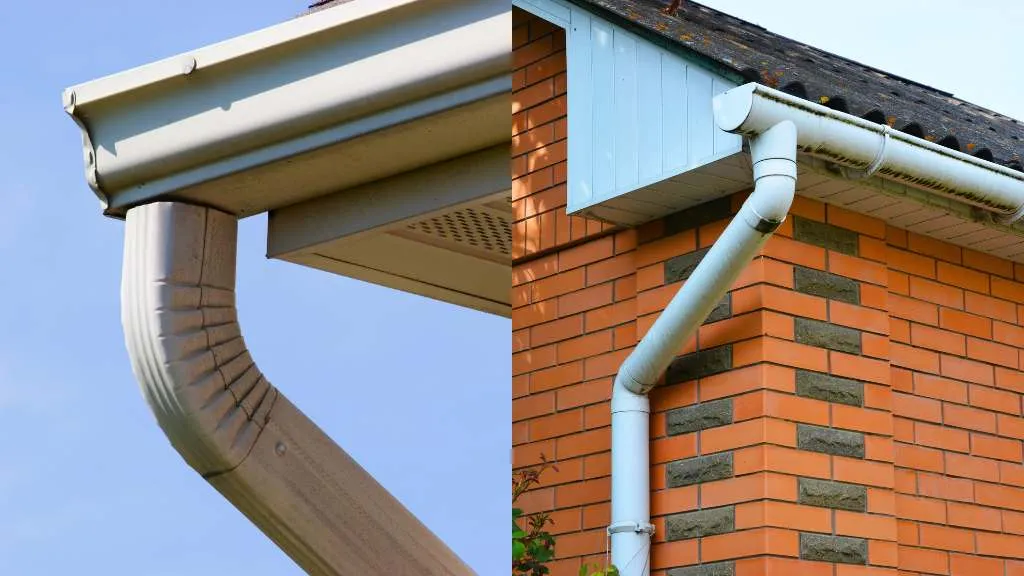
| Key Takeaways: 1. K-style gutters are the most popular for modern homes, offering both aesthetic appeal and high water capacity. 2. Seamless gutters are a top choice for low maintenance and reduced leak risks. 3. Box and fascia gutters provide sleek, modern options that handle heavy rainfall efficiently. 4. Understanding gutter mounting types, like hanger or spike and ferrule, helps in selecting a durable installation. 5. Choosing the right gutter system ensures long-term protection and minimal maintenance for your home. |
When it comes to safeguarding your home, gutters are your unsung heroes. They might not get the spotlight like your home’s exterior or landscaping, but the right gutter system is crucial in protecting your house from water damage. With a variety of rain gutter styles, types of gutters, and mounting options available, making the right choice can be a bit overwhelming. But don’t worry! We’re here to guide you through everything you need to know.
Exploring Types of Gutters
1. K-Style Gutters
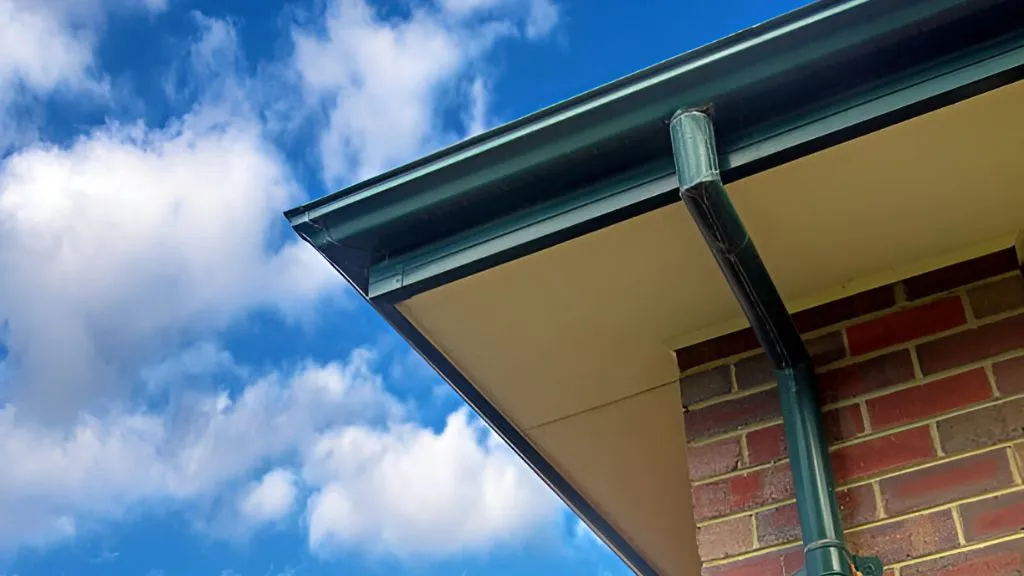
Let’s start with the K-style gutters, the most popular option for modern homes. What makes these gutters stand out? It’s all in the design. The “K” in K-style comes from the shape of their profile, which mimics the appearance of crown moulding. Not only does this rain gutter style look great, but it also has a practical benefit—these gutter types can hold a significant amount of water. If you live in an area that sees heavy rainfall, K-style gutters are a smart choice because their larger capacity helps prevent overflow. They’re typically available in various materials like aluminium, vinyl, and steel, offering you plenty of choices to match your home’s exterior.
2. Half-Round Gutters
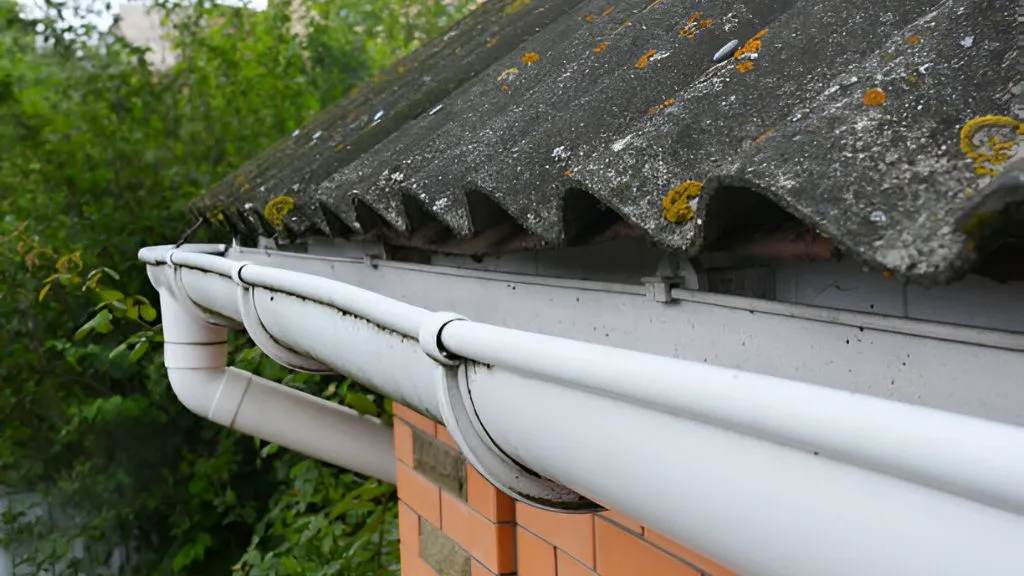
If you’re drawn to a more traditional or historic look, half-round gutters might catch your eye. As the name suggests, these gutter types are shaped like a half-circle, giving them a smooth, curved appearance. They’re often found in older homes or those designed with a vintage flair. While half-round gutters might not have the same water-holding capacity as K-style gutters, they have their perks. For one, their shape makes them less prone to clogging, and these gutters are easier to clean. They’re also incredibly durable, especially when made from materials like copper or galvanized steel, which can last for decades with proper maintenance. This rain gutter style is perfect for those who want to maintain the classic aesthetic of their home while ensuring effective water management.
3. Box Gutters
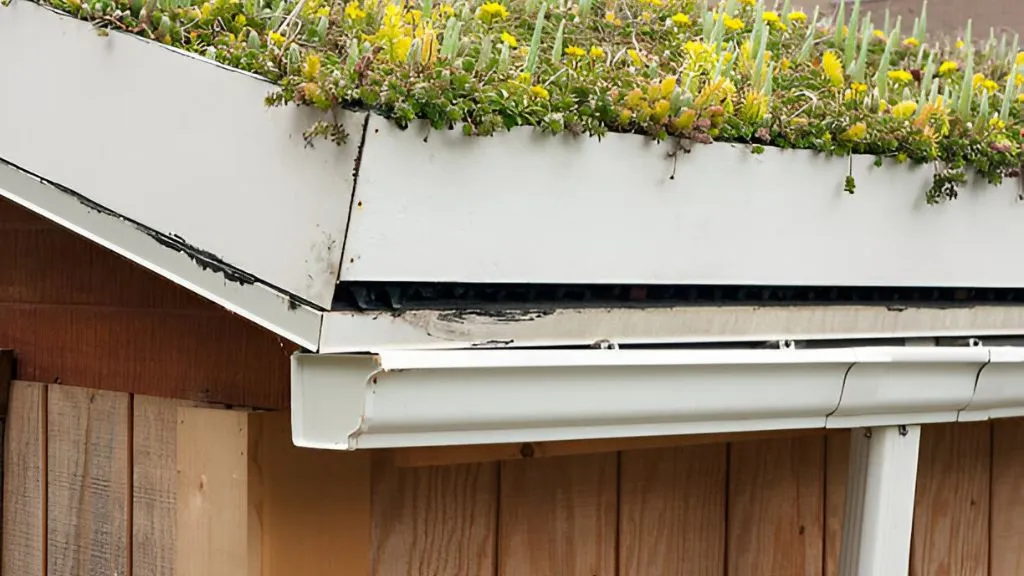
Box gutters offer a sleek, modern solution for homeowners who prefer a minimalist look. Unlike other gutter types that hang off the edge of the roof, box gutters are integrated into the roof structure itself, making them almost invisible from the ground. This hidden rain gutter style doesn’t just look good; it also protects the gutters from damage caused by wind, ice, and debris. Because box gutters are custom-fitted to your roof, they’re highly efficient at managing water flow, even during heavy downpours. Although they’re more commonly used in commercial buildings, many modern homes are now incorporating box gutters for their clean lines and seamless appearance. This gutter type is perfect for those who prioritize both functionality and aesthetics.
Dive Into Rain Gutter Styles
1. Seamless Gutters
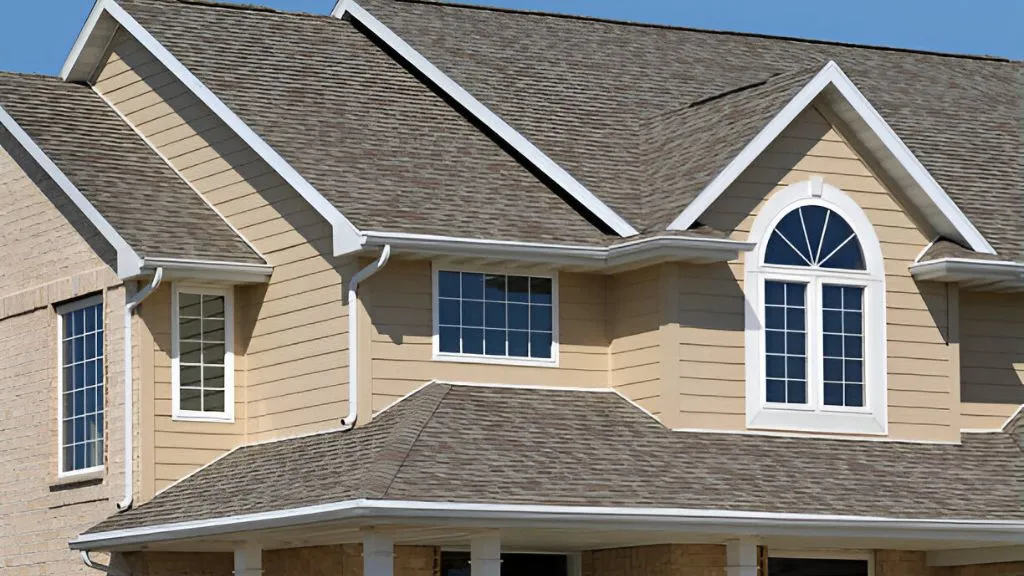
If you want types of gutters that blend into your home without any hassle, seamless gutters are a fantastic choice. Seamless gutters are crafted from a single, continuous piece of material, eliminating the need for the multiple joints and connections found in traditional sectional gutters. This means there are no seams—hence the name—where leaks could potentially develop. Seamless gutters are custom-made to fit your home perfectly, offering a streamlined look that’s both functional and aesthetically pleasing. This gutter type comes in a variety of materials, such as aluminium, copper, and steel, so you can easily find one that complements your home’s exterior. Plus, the lack of seams means less maintenance for you—who doesn’t love that?
2. Sectional Gutters
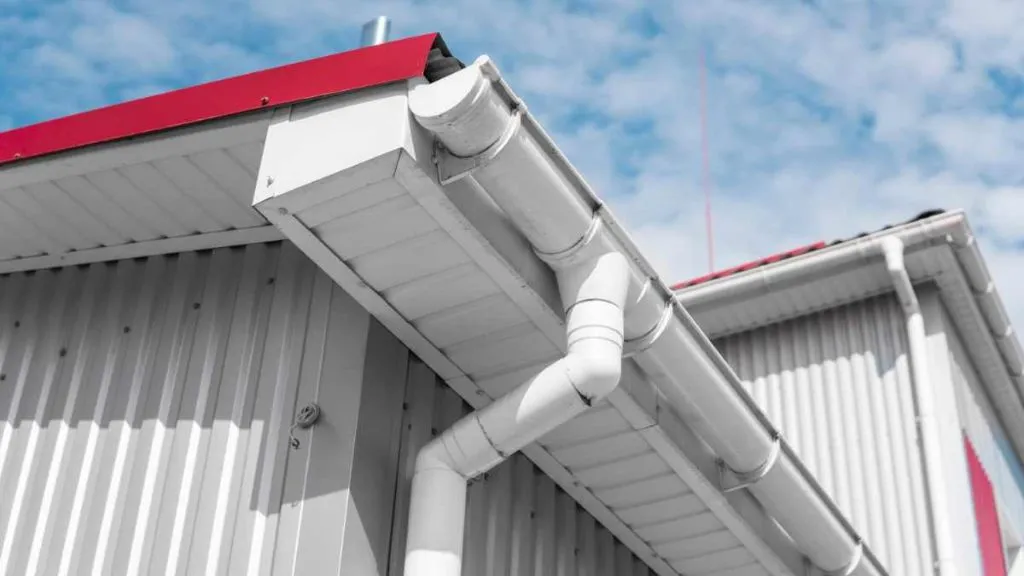
On the other hand, sectional gutters are the more traditional rain gutter style that you’ll find on many homes. These gutters are made up of individual sections that are joined together during installation. While they might be more affordable upfront, it’s essential to consider that the seams between sections can be a weak point where leaks may occur over time. However, they’re easier to install, especially if you’re a DIY enthusiast looking to tackle the project yourself. These types of gutters also offer versatility, as they come in various materials and can be replaced section by section if needed. This makes sectional gutters a practical option for those looking to balance cost and ease of maintenance.
3. Fascia Gutters
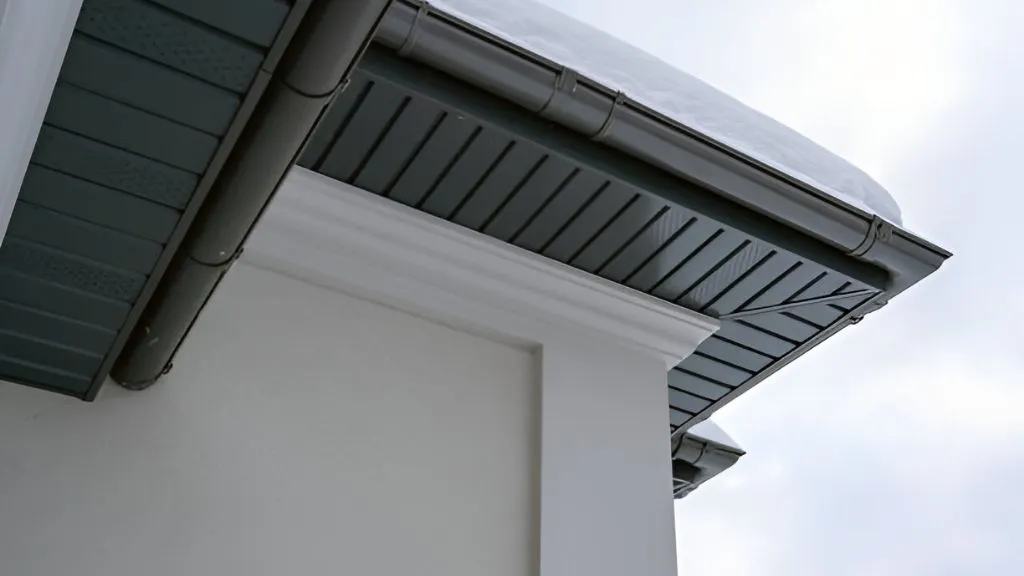
For a gutter type that’s both efficient and discreet, fascia gutters are worth considering. These gutters are designed to attach directly to the fascia board of your home, creating a clean, streamlined appearance that blends seamlessly with your roofline. Fascia gutters are especially effective in regions with heavy rainfall, as their design allows them to handle significant volumes of water without overflowing. This rain gutter style is also less prone to clogging, which means less maintenance and fewer headaches for you. If you’re looking for types of gutters that combine functionality with a sleek, modern look, fascia gutters could be the perfect fit for your home.
Types of Gutter Mounting
1. Spike and Ferrule
The spike and ferrule method is one of the oldest and most straightforward types of gutter mounting. Here’s how it works: a long spike is driven through the gutter and into the fascia board behind it, with a ferrule (a small, hollow tube) placed inside the gutter to provide support. This classic approach has been used for decades because it’s simple and effective. However, over time, the spikes can work loose, especially in areas with harsh weather conditions. Regular maintenance is essential to ensure that the gutters remain securely attached and functional. If you’re considering traditional types of gutters, this method is a reliable, time-tested option.
2. Hanger Mounting
For a more secure and durable option, hanger mounting is a popular choice among homeowners and contractors alike. In this type of gutter mounting, brackets or hangers are attached to the fascia board or the roof, providing a stable base for the gutters to rest on. Hanger mounting offers several advantages, including increased stability and resistance to wind and snow loads. There are different types of hangers, such as strap hangers and hidden hangers, each with its own set of benefits. This type of gutter mounting is ideal if you want a long-lasting solution that can withstand the elements without constant upkeep. Choosing the right types of gutters with effective hanger mounting can significantly enhance your home’s drainage system.
3. Hidden Hangers
If you’re aiming for a clean, uncluttered look, hidden hangers are the way to go. As the name suggests, these hangers are attached inside the gutter, making them invisible from the outside. This type of gutter mounting not only enhances the aesthetic appeal of your home but also provides a robust and secure installation. Hidden hangers are especially popular with seamless gutters, as they maintain the sleek, uninterrupted appearance that many homeowners desire. They’re also highly durable, ensuring that your gutters stay securely in place even during heavy storms or snowfall. For a seamless integration with your types of gutters, hidden hangers are an excellent choice that combines both style and functionality.
Key Gutter Terminology You Should Understand
When diving into the world of gutters, it helps to be familiar with a few essential terms. Understanding these can make it easier to choose the right system and maintain it effectively.
- Fascia: The fascia is the vertical board along the edge of your roof where the gutters are mounted. It’s crucial for both aesthetic and functional purposes, as it helps support the weight of the gutters and prevents water from getting behind the gutter system.
- Downspout: This is the vertical pipe that channels water from the gutters to the ground, directing it away from your home’s foundation. Downspouts are vital for preventing water damage and erosion around your home’s base.
- Splash Block: Positioned at the base of a downspout, a splash block helps to direct water flow away from the foundation, preventing soil erosion and damage to your home’s structure.
- Hangers: These are the brackets used to attach the gutter to your home. There are different types of hangers, including hidden hangers, which are concealed inside the gutter for a cleaner look, and strap hangers, which provide additional support.
- Pitch: The pitch refers to the slope of the gutter, which is necessary for proper drainage. A correctly pitched gutter will ensure that water flows smoothly toward the downspout without pooling in the middle.
- Seamless Gutters: Unlike traditional sectional gutters, seamless gutters are made from a single piece of material, reducing the chances of leaks and providing a cleaner appearance.
- Ferrule: This is the small, hollow tube placed inside the gutter during the spike and ferrule mounting method, which helps to support the gutter and keep it in place.
- K-Style Gutters: These are the most common type of gutters, characterized by their flat back and bottom and decorative front that resembles crown moulding. They are popular for their high capacity and aesthetic appeal.
Understanding these terms will help you make informed decisions about the types of gutters that best suit your home’s needs, ensuring effective water management and long-term protection.
Conclusion
Choosing the right gutter system for your home is about more than just preventing leaks—it’s about ensuring the longevity and protection of your property. By understanding the different types of gutters, rain gutter styles, and types of gutter mounting, you can make an informed decision that enhances both the functionality and appearance of your home. Whether you’re drawn to the traditional elegance of half-round gutters, the seamless efficiency of modern designs, or the discreet charm of fascia gutters, there’s a perfect option out there for you. So take the time to explore your choices, and invest in a gutter system that will keep your home safe and dry for years to come.






